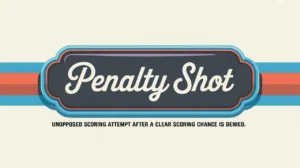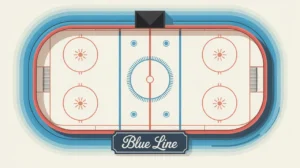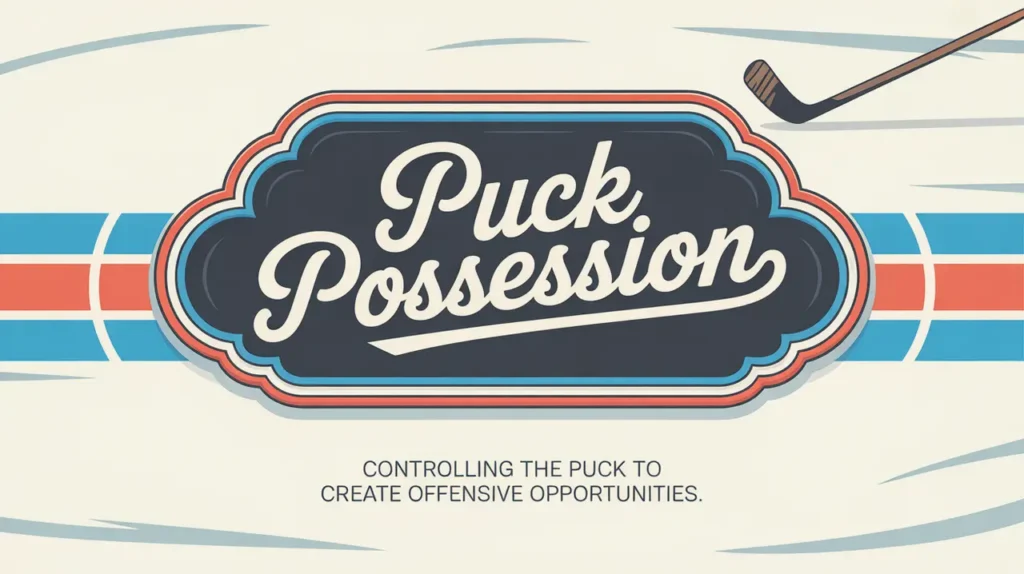Jim’s Intro to Icing
Hi folks, Jim here, the only commentator who once tried to explain icing to my aunt and accidentally made it sound like a baking tutorial.
What is icing?
Icing is a rule designed to prevent teams from simply firing the puck down the ice to relieve pressure without making a real play. It happens when a player shoots the puck from behind the center red line, and it crosses the opponent’s goal line untouched. When this happens, play is stopped and a faceoff is held in the offending team’s defensive zone. It keeps the game moving strategically, discouraging lazy clears and rewarding teams that maintain possession.
How does it work?
Icing follows a clear sequence:
- Puck is Shot from Behind the Red Line: A defending player fires the puck down the length of the ice.
- Puck Crosses the Opponent’s Goal Line: It must fully cross the line for icing to apply.
- No One Touches It: If the puck is touched by any player before crossing, icing is waved off.
- Linesman Signals Icing: The whistle blows, and the puck comes back for a defensive-zone faceoff.
There are a few key variations:
- No Icing on the Penalty Kill: Shorthanded teams can legally clear the puck the full length of the ice.
- Goaltender Play: If the opposing goalie comes out to play the puck or touches it, icing is waived.
- Hybrid Icing (Modern Rule): Officials judge icing based on which player (attacker or defender) reaches the faceoff dots first. This avoids dangerous races to the end boards while keeping the play competitive.
The basic principle: if you dump it too far without purpose, you give up control and face a defensive draw.
How do you make good decisions with it?
Smart icing decisions rely on awareness, strategy, and timing.
- Avoid Lazy Clears: Under pressure, aim for controlled zone exits or smart chips off the boards, not blind icing.
- Use the Red Line: Gain the red line before dumping the puck deep to avoid an icing call.
- Penalty Kill Situations: Clear confidently without worrying about icing.
- Goalie Awareness: Know when goalies might come out to play the puck and nullify icing.
- End-Game Scenarios: Teams protecting a lead often make calculated clears to avoid turnovers, but they must be aware of icing consequences.
How do you master it?
Mastering icing is about precision and situational hockey sense. Players learn exactly where the red line is, how to chip pucks smartly, and when to ice the puck as a last resort. Coaches drill quick decision-making under forecheck pressure so players don’t default to panic clears. Skilled teams manage clears with control, using the glass, boards, or support passes to relieve pressure without whistles.
What does it look like when done right?
Good teams rarely ice the puck unnecessarily. When they do, it’s deliberate, like stopping a breakaway or buying a few seconds late in the game. Otherwise, they make smooth clears, hitting the red line before dumping deep or passing cleanly out of the zone. Play flows without unnecessary faceoffs, and defenders aren’t stuck gassed in their own end.
Commentator’s Corner
Jim’s Take
I’ve seen tired lines ice the puck three shifts in a row and turn their defensive zone into a stress test. One smart chip at the red line could’ve spared everyone.
Parent Tip
Teach young players where the red line is and why it matters. Once they learn to use it, icing calls drop dramatically.
Player Tip
Don’t panic under pressure. Look up, find the red line, and make a smart play. Icing should be your escape hatch, not your default.
A Final Thought
Icing keeps hockey honest. Master when to avoid it and when to use it wisely, and you control both possession and pace when the ice starts to tilt against you.









